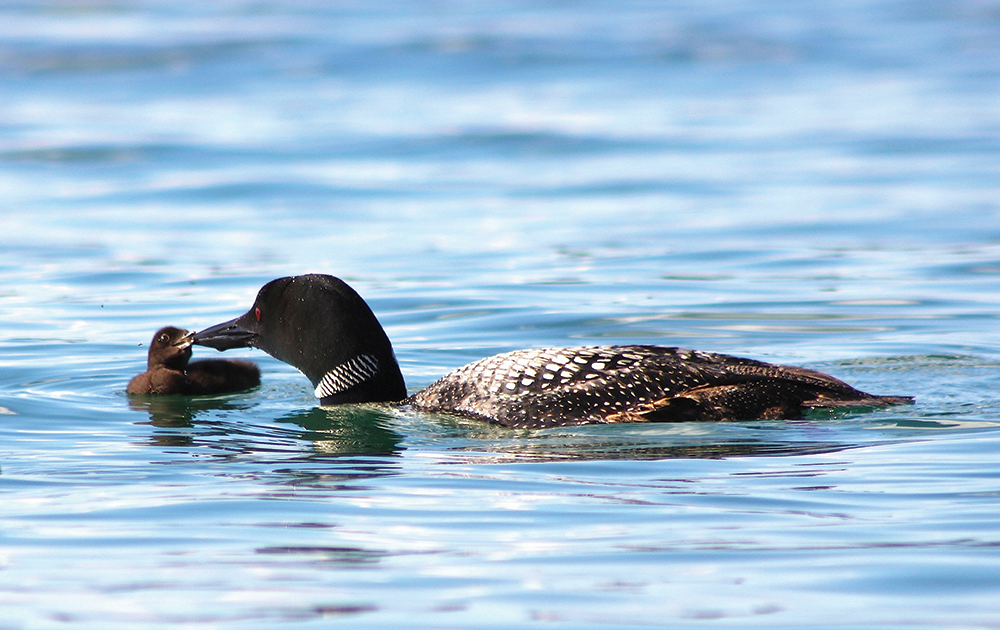
Everything I know, I’ve learned from photographing loons.
While that might not exactly be true, there’s revelation in what you experience when you make a ritual of watching summer sunrises from a kayak in the company of a lake’s resident loons.
Maybe I’m so attached to the pair of loons that make Bear Lake in Kalkaska County home each summer because we share a core value: a love of this lake. You might call loons the original cottagers; like many of us, they return to the same inland lake each year to raise their young, swim, eat, and play.
My lake attachment came through my marriage into a family with a simple summer cottage, and it grew over multigenerational games of horseshoes and bingo, building sand castles, and making s’mores. The soundtrack of it all was that otherworldly call of the resident loons.
But we weren’t friends yet, the pair and I. That took buying a kayak and starting a very unexpected ritual of rising at first light (roughly 5:30 a.m. near the summer solstice) and honing all my senses as I’d glide with my Canon and longest lens amid total silence on a lake still as glass. To find loons in the morning mist, you must hear them first: the whir of wings, the splash landing, and the soul-stirring call to their mate.
Watching them, you learn persistence. Who wouldn’t admire the mama who, some years, nests twice after losing her first eggs to an errant wave, human interference, or a hungry turtle? No wonder the Odawa called them “mahng” (brave), likely naming them after watching parents spend whole days diving and feeding and protecting their young from harm.
Over time, I developed a deep sense of wonder. It started as a photography practice — finding a spot at some distance behind the pair and catching their silhouette just as the sun crested the horizon. It grew as I saw, day after day, how the loons would rise up and flap their wings as they faced the rising sun, as if performing a daily dance of thanks.
P.S. Bear Lake, a 316-acre lake in eastern Kalkaska County, lies within the Manistee River watershed. It has no inlets or outlets. The lake has a maximum depth of 60 feet and is managed as a two-story lake. Two-story lakes are those that have shallow water habitat for warm- and cool-water gamefish such as bass and panfish, along with a deep, cold-water habitat suitable for trout. Public access to Bear Lake is obtained on the southeast corner. The access site has a paved launch ramp and parking for six or so vehicles with trailers (447 E. Bear Lake Rd., Kalkaska). Loons are a protected species; you must stay at least 300 feet away and avoid nests or loons with their young.
Text and Photo by Kim Schneider







Facebook Comments